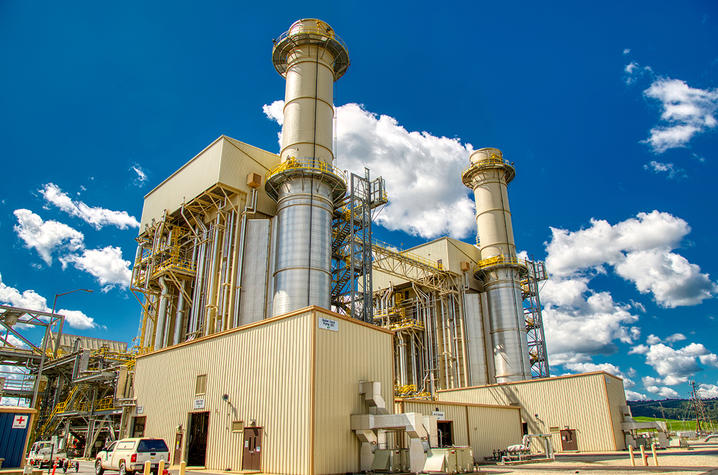LG&E and KU, EPRI, UK Engineering begin industry-leading research

Groundbreaking energy research that could lead to the first-of-its-kind deployment of carbon capture technology at a natural gas combined-cycle power plant is underway in Kentucky.
The project is a collaboration between Louisville Gas and Electric Company (LG&E) and Kentucky Utilities Company (KU), EPRI and the College of Engineering at the University of Kentucky.
Bechtel, an engineering, construction and project management company, and the University of Michigan are also participating.
The carbon capture research project — funded primarily by a $5.8 million grant from the Department of Energy in 2022 — involves LG&E and KU’s natural gas combined cycle (NGCC) facility, located at Cane Run Generating Station in Louisville.
The NGCC, known as CR7, has been in operation since 2015 and is one of just two NGCCs in the country awarded DOE research funding.
The project entails a front-end engineering design (FEED) study to evaluate the feasibility and approximate cost to pilot and deploy the UK-developed carbon-capture technology on CR7.
The goal is to capture at least 95% of carbon dioxide from gases exiting the unit’s stacks.
CR7 is representative of NGCC power plants in the Midwest and Midsouth — where geographical storage for carbon dioxide is limited. The results of this project are expected to yield valuable information relevant to retrofitting a carbon-capture process on other NGCC units.
The study will lay the groundwork for a full-scale, 10-to-20-megawatt carbon capture sequestration pilot unit at Cane Run. If the unit is deployed as proposed by the group’s FEED study, it would be the first of its kind in the world.
“As part of our commitment to achieve net-zero carbon emissions by 2050, decarbonization technology is a key focus area for our utilities and others across the energy industry with similar goals,” John R. Crockett, LG&E and KU president, said. “We’ve been involved in leading carbon capture research for nearly 20 years and believe the experience we bring — along with our partners’ innovation — will play a critical role in advancing this technology.”
“Demonstrating emerging technology at scale is a critical step in the journey from concept to commercialization,” Neva Espinoza, vice president, energy supply and low-carbon resources at EPRI, added. “This foundational research will shed new light on the potential for carbon capture technology in Kentucky and help inform clean energy development around the world.”
“This research will ultimately enable us to complete all of the assessments needed, scale up our existing carbon capture technology and move to a fully-functioning, utility-scale operation that would be able to sell the carbon captured to one or more local businesses for their needs, or permanently store it underground,” Kunlei Liu, associate professor in the Department of Mechanical and Aerospace Engineering at UK, said.
The FEED study will take place from now through mid-2024 and includes pre-FEED research by UK.
The federal award for the study is the largest won by LG&E and KU since 2011, when the same team — UK, EPRI, and LG&E and KU — won an award for a carbon capture pilot at the utilities’ E.W. Brown Generating Station.
The research is also another milestone in the longtime partnership between UK and LG&E and KU, which began in 2005. Since 2014, the two have operated Kentucky’s largest carbon capture system at E.W. Brown. In partnership with the utilities’ parent company, PPL, and the PPL Research and Development Center based out of KU headquarters in Lexington, they continue to innovate in decarbonization, hydrogen and other technologies.
This material is based upon work supported by the Department of Energy under Award Number DE-FOA-0002515.
More from this series Research Priorities - Energy
Credits
Lindsey Piercy (Public Relations & Strategic Communication)



